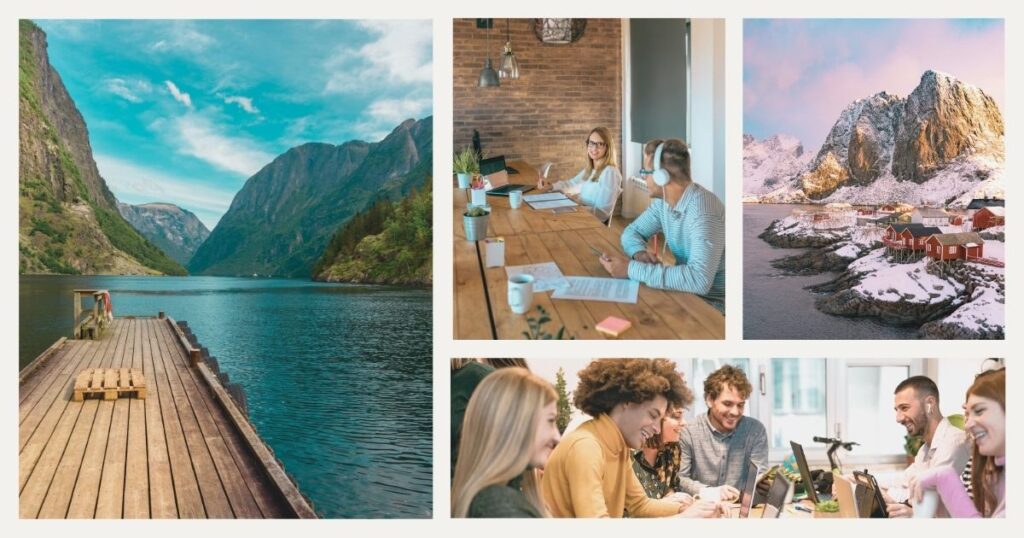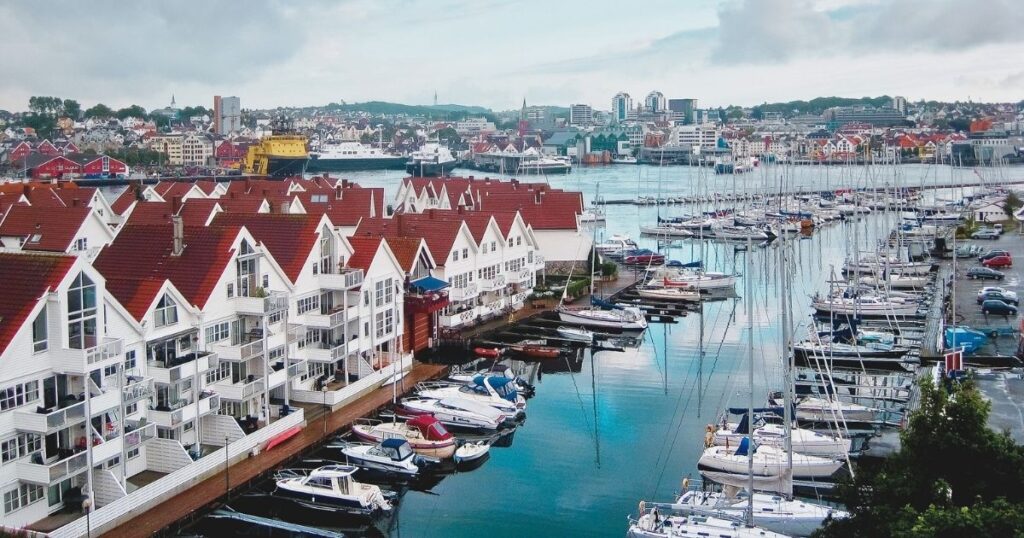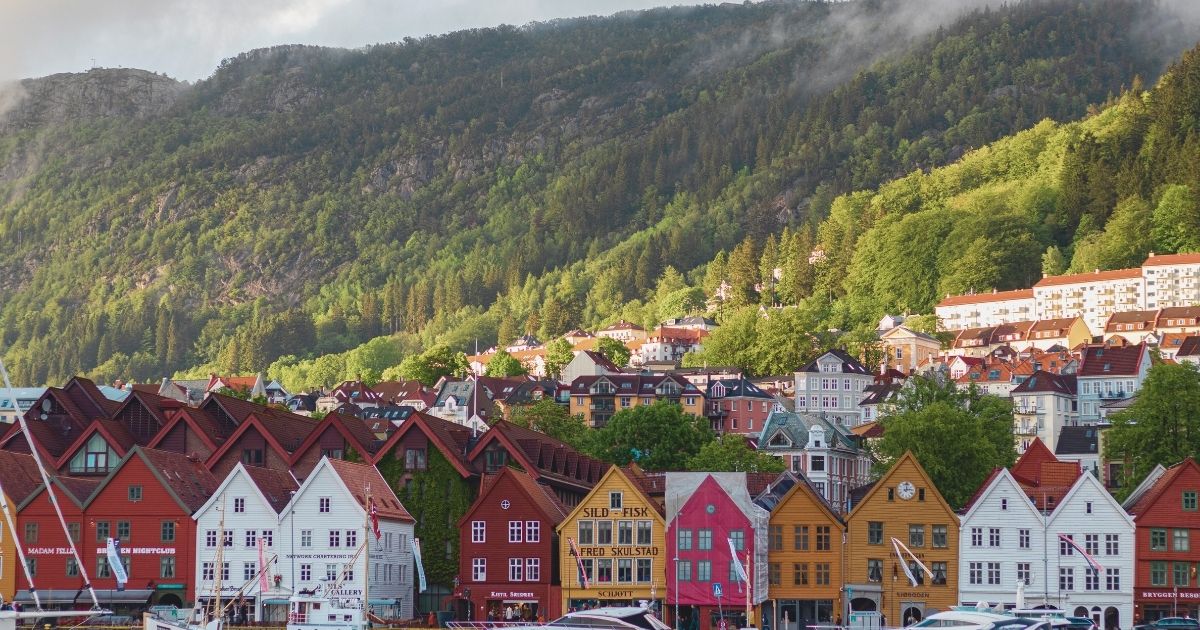Fjords that stretch like fingers into emerald waters, cities that blend cutting-edge design with historical charm, and a society built on balance and sustainability—Norway offers an experience unlike any other destination on the digital nomad circuit.
While not traditionally highlighted on remote work hotlists, Norway represents an untapped opportunity for the discerning digital nomad. With some of the world’s fastest internet speeds, breathtaking natural workspaces, and a culture that prioritizes work-life harmony, this Nordic nation deserves serious consideration.
This guide explores everything you need to know about embracing life as a digital nomad in Norway, from practical considerations to hidden opportunities that make this Scandinavian gem worth the investment.
Understanding Norway’s appeal for remote professionals

When most digital nomads dream of their next destination, tropical beaches or affordable Asian hubs typically top the list. Norway, however, offers a compelling alternative for those seeking something beyond the established circuit.
The appeal of becoming a digital nomad in Norway lies not in budget-friendly living but in the exceptional quality of life. Consistently ranking among the world’s happiest countries, Norway’s society is built around principles that particularly benefit remote workers: trust, autonomy, and environmental consciousness.
A culture that values work-life balance
Norwegian work culture fundamentally understands what many digital nomads seek: meaningful productivity without sacrificing personal wellbeing. The concept of “kos”—creating a sense of coziness and comfort—extends from Norwegian homes into their work environments.
For the digital nomad in Norway, this translates to a society that respects focused work time while equally valuing leisure. The typical Norwegian workday often ends by 4 PM, encouraging people to enjoy outdoor activities despite the early winter darkness. This cultural emphasis on balance creates an environment where productivity and personal time naturally complement rather than compete with each other.
🌟 Pro tip: align your working hours with Norwegian business culture (8 AM-4 PM) even if your clients are international. This allows you to fully participate in local activities and community events that typically begin in the early evening.
Unparalleled natural workspaces
While many digital nomad destinations offer either urban convenience or natural beauty, Norway seamlessly blends both. Even in Oslo, Norway’s capital, you’re never more than 20 minutes from forests, lakes, or fjords.
The option to work against a backdrop of some of the world’s most stunning landscapes creates an unmatched environment for creativity and focus. Imagine taking client calls while overlooking dramatic fjords in Bergen, coding with views of the Northern Lights in Tromsø, or writing content from a cabin in the mountainous region of Jotunheimen.
💡 Did you know? Norway’s allemannsretten (right to roam) law guarantees everyone the right to access, travel through, and camp on uncultivated land regardless of who owns it. This means digital nomads in Norway can legally work from countless stunning natural locations throughout the country.
Practical considerations for digital nomads in Norway

Beyond Norway’s aesthetic and cultural appeal lie practical considerations that every potential digital nomad must evaluate before making the move to this Nordic nation.
Cost of living realities
Norway’s exceptional quality of life comes with corresponding costs. As one of Europe’s most expensive countries, becoming a digital nomad in Norway requires financial planning and typically a higher income than needed in popular destinations like Thailand or Portugal.
Monthly expenses for a comfortable lifestyle in Oslo or Bergen typically start around €2,500-3,000 ($2,800-3,400), including accommodation, food, transportation, and basic leisure activities. However, smaller cities and towns offer more budget-friendly options while maintaining a high quality of life and services.
Despite these costs, many digital nomads in Norway find the investment worthwhile. The combination of efficient public services, pristine environments, personal safety, and overall life quality creates value that transcends pure financial calculations.
Immigration and visa requirements
Norway, while not an EU member, participates in the Schengen Agreement and European Economic Area (EEA). This creates several pathways for potential digital nomads:
For short-term stays:
- EU/EEA citizens can remain up to 6 months without registration
- Non-EU/EEA nationals can typically stay 90 days within a 180-day period on a tourist visa
- The independent contractor visa allows self-employed professionals to live and work in Norway
- The skilled worker visa provides options for those with job offers from Norwegian companies
- The self-employed visa caters to entrepreneurs establishing businesses in Norway
🌟 Pro tip: register with your country’s embassy or consulate upon arrival in Norway. This simple step can dramatically simplify administrative processes if you decide to extend your stay or encounter documentation issues during your time as a digital nomad in Norway.
Seasonal considerations for remote work
Norway’s dramatic seasonal variations significantly impact the digital nomad experience. Understanding these cycles helps in planning an optimal stay:
Summer brings 18-23 hours of daylight with the midnight sun in northern regions, creating unique opportunities for combining work with extended outdoor adventures. Temperatures typically range from 15-25°C (60-77°F), perfect for fjord exploration and hiking between work sessions.
Winter offers a completely different experience with limited daylight and temperatures from -10 to 0°C (14-32°F) in most regions. This season provides Northern Lights viewing opportunities and world-class winter sports during work breaks. Many digital nomads in Norway find winter’s cozy indoor atmosphere exceptionally conducive to focused deep work, with the dramatic contrast of outdoor adventures providing perfect balance.
Digital infrastructure for remote work

Norway consistently ranks among global leaders in digital development, making it exceptionally well-suited for remote professionals regardless of industry or technical requirements.
Internet connectivity and reliability
Digital infrastructure represents one area where Norway truly excels for remote workers. With average fixed broadband speeds exceeding 170 Mbps nationwide and comprehensive 4G/5G mobile coverage, connectivity rarely poses challenges even in relatively remote areas.
This robust digital foundation makes Norway particularly attractive for digital nomads working in data-intensive fields like video production, software development, or virtual reality. Unlike many picturesque destinations where beautiful surroundings come with connectivity compromises, Norway generally offers both.
However, before venturing to particularly isolated locations (especially in northern regions or deep fjords), securing a reliable mobile data backup is advisable. A dedicated travel eSIM from Holafly provides seamless connectivity across Norway’s various regions without physical SIM swapping, ensuring you maintain professional reliability even while exploring beyond major centers.
Coworking and remote work environments
Norway’s progressive work culture embraced flexible arrangements long before the global remote work revolution, resulting in excellent infrastructure for digital nomads:
Major cities like Oslo, Bergen, and Trondheim offer numerous coworking spaces with high-speed connections, 24/7 access options, and strong professional communities. Beyond formal coworking spaces, Norway offers digital nomads unique working environments in libraries, cafés, seasonal outdoor workspaces, and even “remote work cabins” available for rental in scenic locations.
🌟 Pro tip: many Norwegian municipalities offer free working spaces in public libraries that include bookable meeting rooms with video conferencing equipment. These spaces often provide equal or better facilities than paid coworking options, allowing digital nomads in Norway to significantly reduce expenses.
Building community and networking as a digital nomad in Norway

While Norway’s reputation for social reserve is somewhat justified, the country offers surprising opportunities for meaningful connection—particularly for digital nomads willing to embrace local customs and community structures.
Navigating Norwegian social culture
Norwegian social dynamics differ significantly from those in many popular digital nomad destinations. Initial interactions may seem reserved, but beneath this surface lies genuine openness to international perspectives and lasting friendships.
For the digital nomad in Norway seeking community, understanding a few cultural principles proves invaluable. Norwegians typically maintain smaller, deeper social circles rather than wide networks. Group activities centered around mutual interests form the foundation of friendships, with outdoor and sports activities serving as primary social connectors.
These characteristics mean that while instant social immersion may be challenging, the connections digital nomads eventually form in Norway tend to be authentic and enduring.
Digital nomad and expat communities
While smaller than those in established remote work hubs, Norway’s international digital nomad communities are growing, particularly in Oslo, Bergen, Tromsø, and Stavanger. The relatively small size of these communities often works to newcomers’ advantage, with established digital nomads in Norway typically welcoming fresh perspectives into their circles.
Final thoughts on embracing life as a digital nomad in Norway
Norway offers a distinctive alternative to mainstream digital nomad destinations. While the financial investment exceeds many popular remote work locations, the returns—in terms of life quality, work-friendly infrastructure, and natural beauty—make it a compelling choice for remote professionals seeking something beyond the ordinary.
The combination of cutting-edge digital connectivity, progressive work culture, and unparalleled natural environments creates a setting where productivity and wellbeing naturally complement each other. For digital nomads whose work benefits from calm focus rather than constant networking, Norway’s balanced approach to professional life can prove transformative.
As remote work continues evolving, Norway’s pioneering approach to work-life integration positions it as a forward-thinking destination for digital nomads prioritizing substantive experience over trendy hotspots. The question becomes not whether you can afford Norway, but whether you can afford to miss the unique perspective it offers.
For more insights on navigating visa requirements and administrative considerations for remote work in Scandinavian countries, Nomada’s comprehensive guide provides valuable country-specific information for digital professionals.
The digital nomad lifestyle in Norway awaits those seeking something beyond the ordinary. Discover how this Nordic nation might transform your remote work experience through Nomada 👉
Frequently asked questions about being a digital nomad in Norway
May through September offers the most balanced experience for first-time digital nomads in Norway, with comfortable temperatures, extended daylight hours, and full operation of seasonal attractions and transportation. If northern lights viewing is a priority, September-October or February-March provide darkness without extreme winter conditions.
Major cities have growing short-term rental markets, though prices typically exceed those in most European destinations. Booking 2-3 months in advance is advisable, particularly during summer months. Consider locations like Bergen, Tromsø, or Ålesund, where natural beauty compensates for higher costs.
English proficiency in Norway exceeds 90% of the population, making it possible to live and work comfortably without Norwegian language skills. However, learning basic phrases demonstrates respect and often leads to warmer local interactions.
While “affordable” is relative in the Norwegian context, cities like Kristiansand, Hamar, and Drammen offer 15-25% lower living costs than Oslo while maintaining excellent digital infrastructure. University towns like Trondheim sometimes offer better value through student-oriented services.
Norway’s climate varies dramatically by region and season. The greater challenge for many digital nomads in Norway is adapting to dramatic seasonal light changes rather than temperature. Most buildings have excellent insulation and heating systems that maintain comfortable indoor environments regardless of external conditions.




